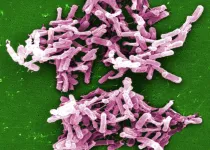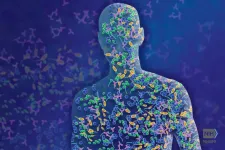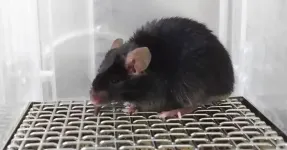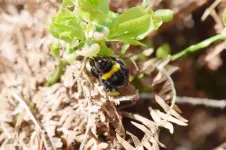(Press-News.org) The Gerontological Society of America's highly cited, peer-reviewed journals are continuing to publish scientific articles on COVID-19. The following were published between May 4 and June 14; all are free to access:
Cardiometabolic therapy and mortality in very old patients with diabetes hospitalized due to COVID-19: Research article in The Journals of Gerontology, Series A: Biological Sciences and Medical Sciences by Jose Manuel Ramos-Rincón, MD, PhD, Luis M. Pérez-Belmonte, MD, PhD, Francisco Javier Carrasco-Sánchez, MD, PhD, Sergio Jansen-Chaparro, MD, PhD, Mercedes De-Sousa-Baena, MD, José Bueno-Fonseca, MD, Maria Pérez-Aguilar, MD, Coral Arévalo-Cañas, MD, Marta Bacete Cebrian, MD, Manuel Méndez-Bailón, MD, PhD, Isabel Fiteni Mera, MD, PhD, Andrés González García, MD, PhD, Francisco Navarro Romero, MD, PhD, Carlota Tuñón de Almeida, MD, Gemma Muñiz Nicolás, MD, Amara González Noya, MD, Almudena Hernández Milian, MD, Gema María García García, MD, José Nicolás Alcalá Pedrajas, MD, Virginia Herrero García, MD, Luis Corral-Gudino, MD, PhD, Pere Comas Casanova, MD, Héctor Meijide Míguez, MD, PhD, José Manuel Casas-Rojo, MD, Ricardo Gómez-Huelgas, MD, PhD, and the SEMI-COVID-19 Network The Role of Media Sources for COVID-19 Information on Engaging in Recommended Preventive Behaviors among Medicare Beneficiaries Aged ≥ 65 Years: Research article in The Journals of Gerontology, Series B: Psychological Sciences and Social Sciences by Boon Peng Ng, PhD, and Chanhyun Park, PhD Impact of Negative and Positive Age Stereotypes in Media on Older Individuals' Mental Health during the COVID-19 Pandemic: Article in The Journals of Gerontology, Series B: Psychological Sciences and Social Sciences by Becca R. Levy, PhD, E-Shien Chang, MA, Sarah Lowe, PhD, Natalia Provolo, BA, and Martin D Slade, MPH Network-exposure severity and self-protective behaviors: The case of COVID-19: Original research article in Innovation in Aging by Howard Litwin, PhD, and Michal Levinsky, MA COVID-19 and its Impacts on Older Adults: Global Perspectives: Editorial in The Journals of Gerontology, Series B: Psychological Sciences and Social Sciences by Danan Gu and Qiushi Feng The Lived Experience of Already-Lonely Older Adults During COVID-19: Research article in The Gerontologist by Henry Bundy, PhD, Heather M. Lee, BSW, CCM, Kim N. Sturkey, BA, ACM-SW, CCM, CMC, and Anthony J. Caprio, MD Purpose in life, loneliness, and protective health behaviors during the COVID-19 pandemic: Research article in The Gerontologist by Yoona Kang, PhD, Danielle Cosme, PhD, Rui Pei, PhD, Prateekshit Pandey, MA, José Carreras-Tartak, BA, and Emily B. Falk, PhD
INFORMATION:
The Gerontological Society of America (GSA) is the nation's oldest and largest interdisciplinary organization devoted to research, education, and practice in the field of aging. The principal mission of the Society -- and its 5,500+ members -- is to advance the study of aging and disseminate information among scientists, decision makers, and the general public. GSA's structure also includes a policy institute, the National Academy on an Aging Society.
Best known for its presence in house cats and a tendency to infect and alter the behaviors of rodents and humans, the parasite Toxoplasma gondii (T. gondii) is also associated with bold behavior among wild hyena cubs and risk of death during interactions with lions, finds new research from the University of Colorado Boulder.
The findings, published this week in Nature Communications, reinforce previous research which has found the parasite can prompt profound behavioral changes in its hosts, and potentially in the 2 billion people worldwide estimated to be infected by it. While T. gondii has been well studied in laboratory settings with humans and wild-caught ...
Researchers from Charité - Universitätsmedizin Berlin and the University of California in San Francisco were able to show for the first time that a very low calorie diet significantly alters the composition of the microbiota present in the human gut. In a current Nature* publication, the researchers report that dieting results in an increase of specific bacteria - notably Clostridioides difficile, which is associated with antibiotic-induced diarrhea and colitis. These bacteria apparently affect the body's energy balance by exerting an influence on the absorption of nutrients ...
WHAT:
National Institutes of Health scientists and their collaborators have identified an internal communication network in mammals that may regulate tissue repair and inflammation, providing new insights on how diseases such as obesity and inflammatory skin disorders develop. The new research is published in Cell.
The billions of organisms living on body surfaces such as the skin of mammals--collectively called microbiota--communicate with each other and the host immune system in a sophisticated network. According to the study, viruses integrated in the host genome, remnants of previous infections called endogenous retroviruses, can ...
Researchers at the RIKEN Center for Brain Science and the RIKEN BioResource Research Center in Japan, along with collaborators at the State University of New York at Buffalo, have created a mouse model that allows the study of naturally occurring melatonin. Published in the Journal of Pineal Research, these first experiments using the new mice showed that natural melatonin was linked to a pre-hibernation state that allows mice to slow down their metabolism and survive when food is scarce, or temperatures are cold.
Melatonin is called "the hormone of darkness" because it's released by the brain in the dark, which usually means at night. It tells the body when it's dark outside so that the body can switch to 'night mode'. Although other hormones are easily studied in the laboratory, ...
How many tree species are there in the forest? How are the trees scattered throughout? How high are the individual tree crowns? Are there fallen trees or hollowed-out tree trunks? Forest scientists characterize forests according to structural factors. "Structural richness is very important for biodiversity in forests. But forests used for forestry are generally poor in terms of structure," says Tristan Eckerter from the Chair of Nature Conservation and Landscape Ecology at the University of Freiburg. Therefore, together with research teams from the Chair of Silviculture and the Black Forest National Park, he investigated ...
A new article published in the Journal of the Association for Consumer Research presents a neural model of maladaptive consumption.
Consumption (of, for instance, substances, food, and online media) is driven mainly by expected rewards that stem from the ability of the consumption act to satisfy intrinsic (e.g., curiosity) and extrinsic (e.g., job performance) needs. In the article, "A Triple-System Neural Model of Maladaptive Consumption," the authors define maladaptive consumption as a state of compulsive seeking and consumption of rewarding products or experiences, which are sustained despite the negative consequences of such behaviors.
"Understanding the neural basis of maladaptive ...
Pairing blueberry pie with a scoop of ice cream is a nice summer treat. Aside from being tasty, this combination might also help people take up more of the "superfruit's" nutrients, such as anthocyanins. Researchers reporting in ACS' Journal of Agricultural and Food Chemistry show that α-casein, a protein found in cow's milk, helped rats absorb more blueberry anthocyanins and their byproducts, boosting accessibility to these good-for-you nutrients.
In studies, anthocyanins have been shown to have antioxidant properties, lower blood pressure and reduce the risk of developing some cancers. However, only small amounts of these nutrients are absorbed ...
For patients who have inflammatory bowel syndrome (IBS), the condition is literally a pain in the gut. Chronic -- or long-term -- abdominal pain is common, and there are currently no effective treatment options for this debilitating symptom. In a new study in ACS Pharmacology & Translational Science, researchers identify a new potential source of relief: a molecule derived from spider venom. In experiments with mice, they found that one dose could stop symptoms associated with IBS pain.
The sensation of pain originates in electrical signals carried from the body to the brain by cells called ...
Air quality varies greatly within regions and cities around the world, and exposure to air pollution can have severe health impacts. In the U.S., people of color are disproportionately exposed to poor air quality. A cover story in Chemical & Engineering News, the weekly newsmagazine of the American Chemical Society, highlights how scientists and community activists are using new technologies to gather data that could help address this inequity.
Despite the success of the U.S. Clean Air Act in improving ambient air quality over the past 50 years, discriminatory housing, loan ...
Over recent years, the retina has established its position as one of the most promising biomarkers for the early diagnosis of Alzheimer's. Moving on from the debate as to the retina becoming thinner or thicker, researchers from the Universidad Complutense de Madrid and Hospital Clínico San Carlos are focusing their attention on the roughness of the ten retinal layers.
The study, published in Scientific Reports, "proves innovative" in three aspects according to José Manuel Ramírez, Director of the IIORC (Ramón Castroviejo Institute of Ophthalmologic Research) at the UCM. "This is the first study to propose studying the roughness of the retina and its ten constituent layers. They have devised a mathematical method to measure the degree of wrinkling, through the fractal ...




